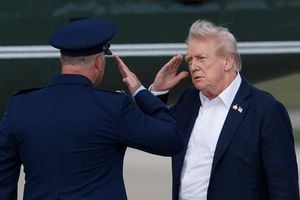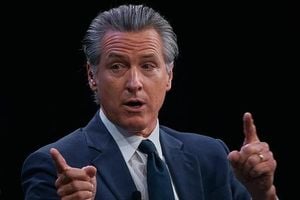The global economic landscape is undergoing a dramatic transformation as the BRICS bloc—Brazil, Russia, India, China, and South Africa—along with their newly inducted partners, assert unprecedented influence on world affairs. The latest meetings on the sidelines of the 80th United Nations General Assembly (UNGA80) in New York, held on September 26, 2025, underscored just how quickly the balance of power is tilting. India, set to assume the BRICS Chairship in 2026, hosted the gathering, with External Affairs Minister S Jaishankar leading a session that would set the agenda for the bloc’s next chapter.
According to a joint statement released after the meeting, there was unanimous support for India’s upcoming presidency and the hosting of the XVIII BRICS Summit. The ministers, representing both founding and new members—including Egypt, Ethiopia, Iran, Saudi Arabia, UAE, and Indonesia—expressed appreciation for India’s leadership and extended their full backing for its Chairship. As Jaishankar put it in a post on X, BRICS is increasingly seen as a “voice of reason,” with priorities spanning food and energy security, digital transformation, and a push for long-overdue reforms at the United Nations.
One of the most urgent topics on the agenda was terrorism. The ministers condemned, in the strongest terms, the April 22, 2025, terrorist attack in Jammu and Kashmir’s Pahalgam, which left 26 dead and many more injured. The joint statement reaffirmed their commitment to combating terrorism in all its forms, including cross-border incursions, terrorism financing, and the provision of safe havens. “They reaffirmed their commitment to combating terrorism in all its forms and manifestations, including the cross-border movement of terrorists, terrorism financing and safe havens,” the statement read, adding a call for zero tolerance and a rejection of double standards—a pointed message given recent tensions between India and Pakistan.
Yet, the BRICS meeting was about more than security. Trade and economic sovereignty took center stage, with the ministers voicing deep concern over the proliferation of trade barriers and protectionist policies. The statement specifically criticized “the indiscriminate rising of tariffs and non-tariff measures” that threaten to fragment global trade and disrupt supply chains. Implicitly, this was a rebuke of the United States’ recent imposition of 50% tariffs on Indian goods over Russian oil imports, a move India has denounced as coercive. The ministers reaffirmed their commitment to a “non-discriminatory, open, equitable, transparent, fair, inclusive, and rules-based multilateral trading system” anchored by the World Trade Organization.
But perhaps the most transformative development has been the bloc’s collective move away from the US dollar in international trade. According to Watcher Guru, Russian oil deals that once relied on the dollar for about half of all transactions now use the greenback in only 5% of cases—a staggering shift. Andrei Klintsevich, a Russian expert on military and political conflict, explained, “Now it is 5%, as increasingly more countries opt out of the US dollar in trade. This also applies to the euro.” He continued, “Belarus and Russia have decisively pivoted eastward. We are developing an alternative center of global influence embodied by the SCO and BRICS.”
India, for its part, has introduced rupee-based trading for BRICS countries, making it easier for partners to transact directly in rupees via special Vostro accounts. This move, enabled by the Reserve Bank of India’s new policy allowing banks to open such accounts without prior approval, is widely seen as a countermove to the US tariffs. Now, countries buying Indian products can pay directly in rupees, bypassing the dollar altogether. As Watcher Guru noted, this policy shift is a clear sign of India’s determination to expand the rupee’s global reach under Prime Minister Narendra Modi.
The expansion of BRICS, with the inclusion of major economies from the Middle East and Africa, further strengthens the bloc’s push for alternative currencies and independent financial systems. BRICS is not only advancing settlements in local currencies but also promoting grain exchanges and other mechanisms that facilitate trade outside the traditional dollar system. These efforts, as Klintsevich underlined, are about survival and resilience: “Of course, the severance of economic ties is always bad. But we will survive it.”
These shifts are not occurring in a vacuum. The BRICS nations now account for 40% of global GDP in Purchasing Power Parity (PPP) terms, up from 37% just recently, according to the International Monetary Fund and World Bank. This puts the bloc 11% ahead of the G7 economies, which stand at 29%. With a combined population of 3.2 billion—nearly half the world’s people—and an average GDP growth rate of 5.2% compared to the G7’s 1.8%, BRICS is challenging the very foundations of Western economic dominance.
The implications for global finance are profound. As Reuters reported, Russian Foreign Minister Sergey Lavrov emphasized that these initiatives are “vital in fostering a more resilient and independent economic framework for BRICS nations.” The bloc’s move toward local currency settlements and the creation of new payment systems to bypass Western-dominated networks like SWIFT could reshape how money moves globally. Cryptocurrencies, too, stand to benefit. Bitcoin, often viewed as a hedge against fiat instability, and Ethereum, with its smart contract capabilities, could see increased demand as BRICS reduces reliance on the dollar. Crypto analyst Sarah Thompson told CoinDesk, “De-dollarization could be a massive catalyst for Bitcoin and stablecoins. If even 5% of BRICS trade shifts to crypto-based settlements, we’re talking about billions in transaction volume.”
Yet, challenges remain. Regulatory uncertainty looms large, especially given China’s ongoing crackdown on crypto and India’s cautious approach. While pilot projects in Russia and China are testing blockchain technologies for cross-border payments, the scalability of such systems remains unproven at the scale BRICS envisions. There’s also the risk of fragmentation: inconsistent regulations across member states could slow or even stall broader adoption of digital assets.
Meanwhile, BRICS’ call for United Nations Security Council reform gained new momentum. The ministers reiterated their support for the 2023 Johannesburg-II Leaders’ Declaration, advocating a comprehensive overhaul to make the Council “more democratic, representative, effective and efficient.” China and Russia, as permanent UNSC members, once again backed the aspirations of Brazil and India to play a greater role in the United Nations, including the Security Council—a boost to India’s longstanding bid for a permanent seat.
All told, these developments represent the most significant shift in global commerce patterns since the Bretton Woods system. The rise of BRICS, its economic surge, and its determined push for sovereignty in both trade and geopolitics are redrawing the map of international power. As the world watches, one thing is certain: the BRICS bloc is no longer content to play second fiddle. The coming years will reveal just how far this new order can go—and whether the rest of the world is ready for it.





